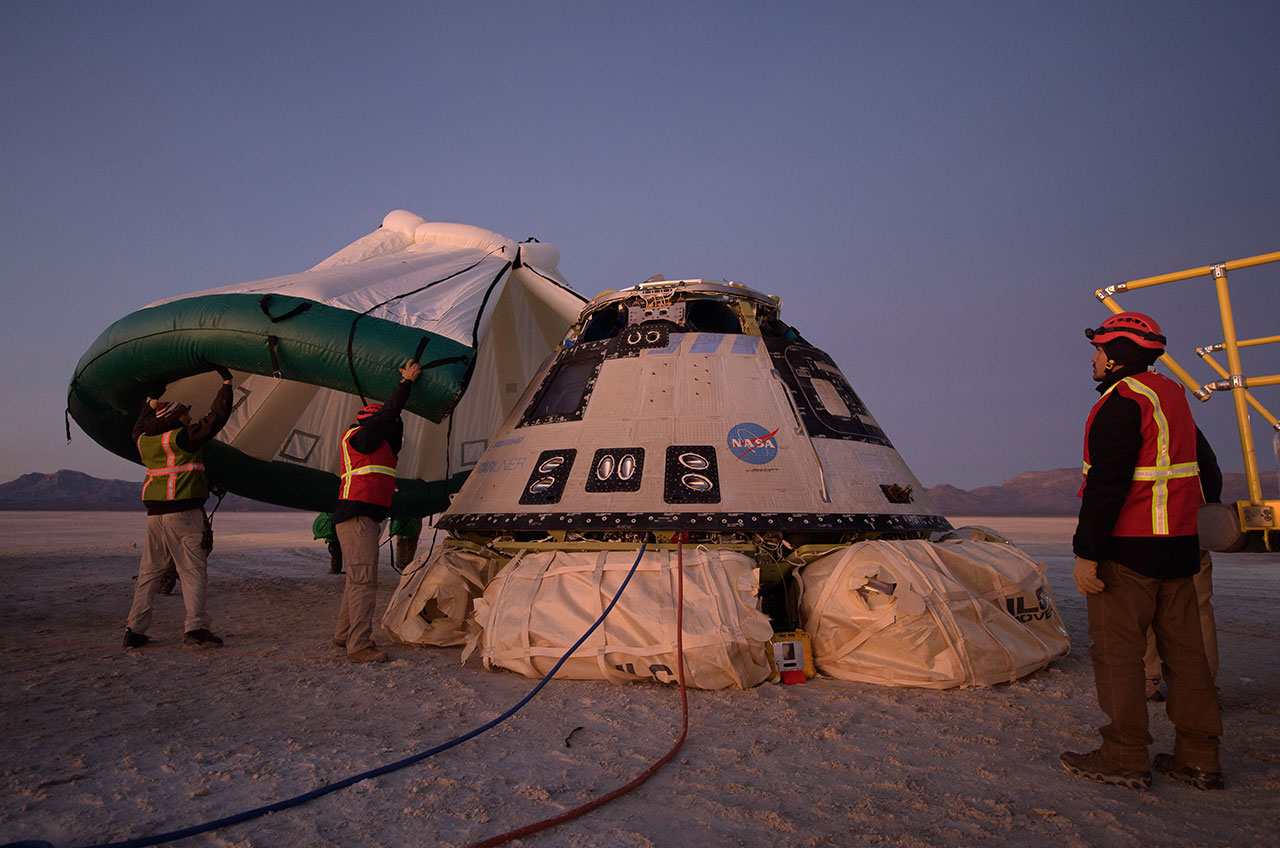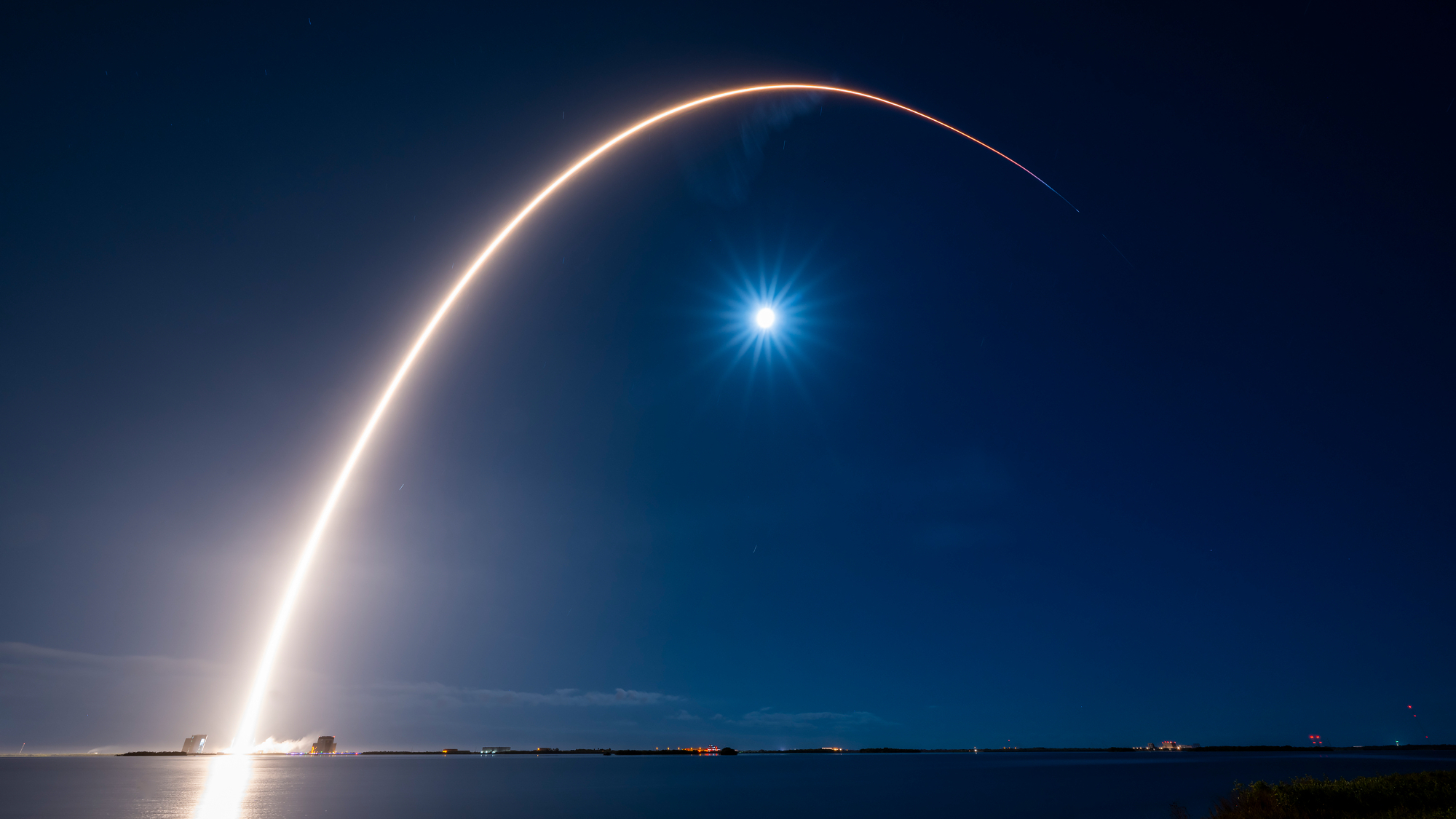NASA Mulls Next Steps for Boeing's Starliner Astronaut Taxi After Shortened Test Flight

It'll be a little while before we know if the next flight of Boeing's new CST-100 Starliner capsule will carry astronauts.
On Dec. 20, 2019, Starliner launched on an uncrewed mission called Orbital Flight Test (OFT), which was designed to demonstrate the capsule's ability to fly NASA astronauts to and from the International Space Station (ISS). Boeing has been contracted by NASA's Commercial Crew Program to do just that, as has SpaceX.
OFT was supposed to last eight days and feature an autonomous docking with the station. But Starliner suffered a glitch with its onboard timing system shortly after liftoff and got stranded in an orbit too low to allow a rendezvous with the ISS. The reusable capsule ended up zooming around Earth by itself for 48 hours, then coming down for a picture-perfect landing in New Mexico's White Sands Missile Range on Dec. 22.
Related: Boeing's 1st Starliner Flight Test in Photos
The original plan called for OFT to be followed by a crewed demonstration mission to the ISS. And that option is still on the table, despite the issues with December's flight, NASA Administrator Jim Bridenstine wrote in an update Tuesday (Jan. 7).
"NASA is evaluating the data received during the mission to determine if another uncrewed demonstration is required. This decision is not expected for several weeks as teams take the necessary time for this review," Bridenstine wrote.
"NASA's approach will be to determine if NASA and Boeing received enough data to validate the system's overall performance, including launch, on-orbit operations, guidance, navigation and control, docking/undocking to the space station, reentry, and landing," he added. "Although data from the uncrewed test is important for certification, it may not be the only way that Boeing is able to demonstrate its system's full capabilities."
Breaking space news, the latest updates on rocket launches, skywatching events and more!
Bridenstine also announced that NASA and Boeing are forming a joint team to investigate Starliner's timing anomaly and figure out how to make sure it doesn't happen again.
"Once underway, the investigation is targeted to last about two months before the team delivers its final assessment," the NASA head wrote. He added that Starliner is currently being transported from White Sands to Boeing's facilities on Florida's Space Coast, where the capsule will be examined in even greater detail.
The latest big Commercial Crew contracts were awarded in 2014. Boeing got $4.2 billion to finish development work on Starliner and fly six operational, crewed ISS missions. SpaceX got $2.6 billion to do the same with its Crew Dragon capsule.
Crew Dragon aced its version of OFT, the uncrewed Demo-1, in March of last year. SpaceX is now gearing up for a crucial in-flight test of the capsule's emergency-escape system, which is targeted for Jan. 18. If that test goes well, Crew Dragon would be pretty much cleared for Demo-2, a test mission that will fly NASA astronauts Bob Behnken and Doug Hurley to and from the ISS.
- Boeing's CST-100 Starliner Space Capsule (Infographic)
- Boeing in Space: The Latest News, Images and Video
- How Boeing's Starliner Orbital Flight Test Works: A Step-by-Step Guide
Mike Wall's book about the search for alien life, "Out There" (Grand Central Publishing, 2018; illustrated by Karl Tate), is out now. Follow him on Twitter @michaeldwall. Follow us on Twitter @Spacedotcom or Facebook.

Join our Space Forums to keep talking space on the latest missions, night sky and more! And if you have a news tip, correction or comment, let us know at: community@space.com.

Michael Wall is a Senior Space Writer with Space.com and joined the team in 2010. He primarily covers exoplanets, spaceflight and military space, but has been known to dabble in the space art beat. His book about the search for alien life, "Out There," was published on Nov. 13, 2018. Before becoming a science writer, Michael worked as a herpetologist and wildlife biologist. He has a Ph.D. in evolutionary biology from the University of Sydney, Australia, a bachelor's degree from the University of Arizona, and a graduate certificate in science writing from the University of California, Santa Cruz. To find out what his latest project is, you can follow Michael on Twitter.
